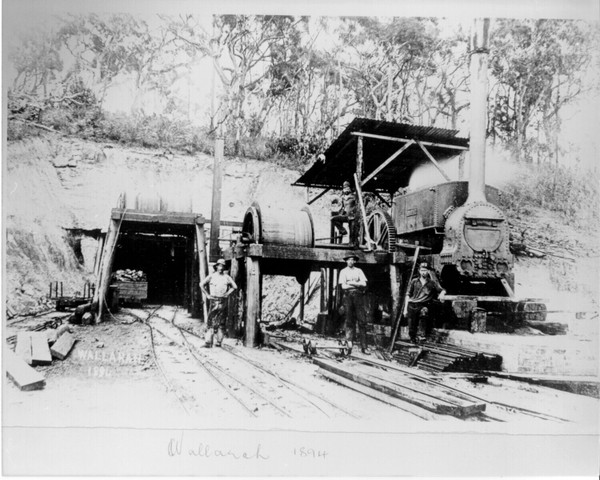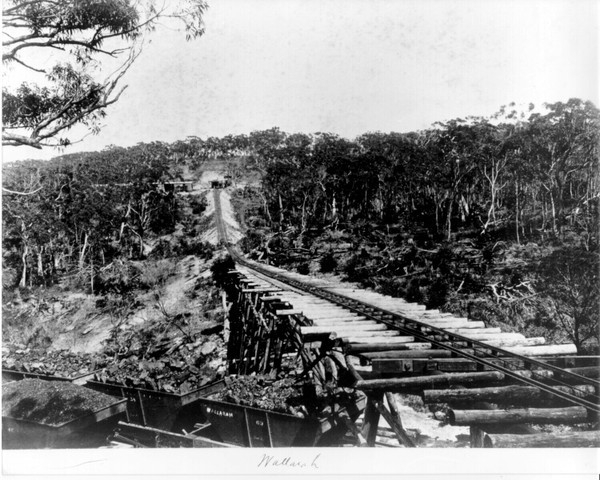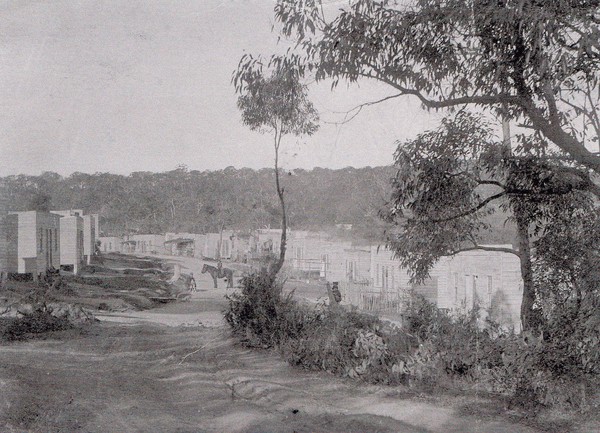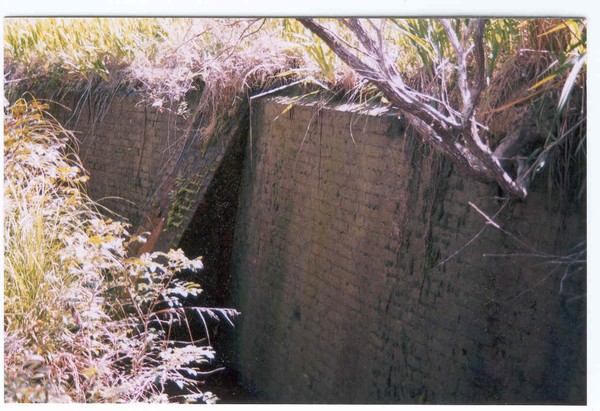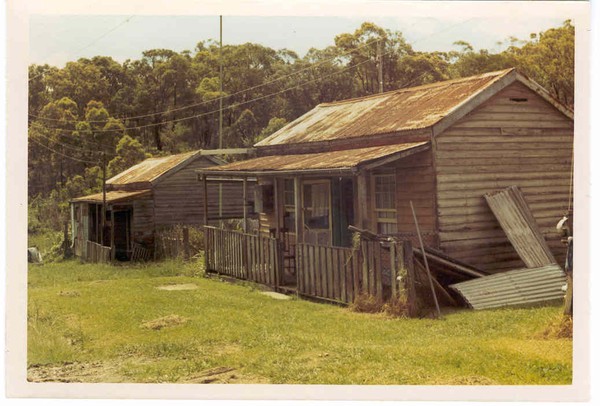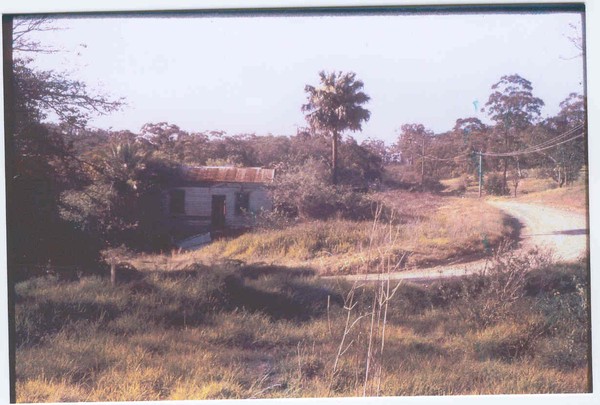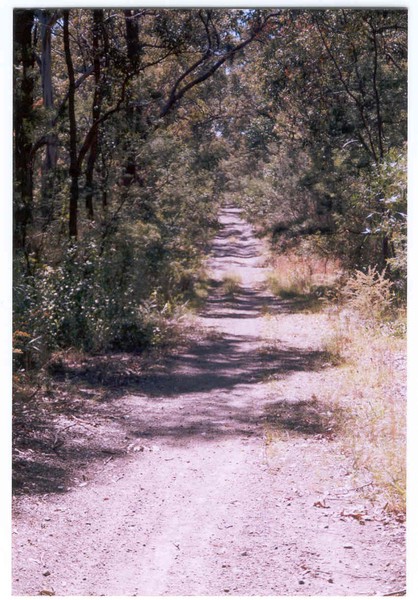The Wallarah Coal Mining Company was formed in London 1888 for the purposes of acquiring a large tract of coal bearing country south of Lake Macquarie Heads NSW.
The establishment of a large colliery in such a secluded spot was a difficult undertaking, as in 1888 there was only a bridle track running from Swansea, a little village at the entrance of Lake Macquarie.
The site selected for the colliery was two and a half miles from the jetty and the township. Mr Parton, the first Mine Manager, built a railway running from the jetty to the mine.
Because the miners had such a long walk before they could even begin work, houses began to spring up nearer to the mine. Thus, Mine Camp came into existence.
In August 1903 a postal receiving office was established at Mine Camp. There was also a shop run by H Hawkes. A flag was flown from a pole near the shop to let miners know if there was work for the day.
By 1903 there was also a Methodist Church at Mine Camp. On 24th December 1903 John Calvert, Methodist Clergyman at Adamstown, married Thomas Crompton and Edith Price at the Methodist Church the Mine.
Robert James Buchanon, now 91, was placed on the Cradle Roll of the Mine Sabbath School in May 1915. Mr Buchanon’s mother had, before her marriage, lived in the “Row”. According to an account of the Mine Camp by Harry Lunn in 1916, the “Row” was a more exclusive part of the settlement. “The houses at the “Row” were of mainly two rooms, no verandah open fireplaces and a tank……. the houses in “Angels Rest” were made of weatherboard, 4 rooms, open fireplace, front verandah.”
Harry Lunn estimated that in 1916 there were about 15 houses in the “row” and 15 houses in “Angels’ Rest”. There were other bush huts in the vicinity. In a Petition to the Federal Postmaster General in 1904 requesting an additional 6 pounds per annum be paid to the postmaster at Mine Camp there were 101 signatures from people residing in the Mine Camp settlement.
“A” pit and “B” pit were the first mine entrances, both being at Mine Camp. By 1903 a new pit, called the “E” tunnel was opened and this tunnel was destined to become the most significant of the Company’s pits. New houses were built by the Company from 1908-1915 close to this new tunnel and the resulting settlement was known as Middle Camp.
The housing stock at the Mine Camp settlement was deteriorating and the settlement would have become defunct sooner but for the Second World War and the need to build a radar station on the high ridge close to the Pacific.
Accommodation was needed to house the female radar operators and the guards. The mess, recreation, kitchen, sleeping quarters and the ablution areas were all constructed to resemble miners’ cottages (including dummy chimneys) so as to hide their real purpose. When the war finished these “miners’ houses were acquired by the Housing Commission of NSW and these were rented out to local families.
In 1950 the following families lived in these houses:
- Crompton
- Sinclair
- Baxter
- Miller
- Smith
- Henderson
- Chinnock
The Post Office closed in 1952 and it is recorded that there were 21 households at the time. The last residents in Mine Camp were Des and Lillian Lynch who left in May1981.
‘Mine Camp’ as a placename was withdrawn from the Geographical Names Register on the 31st May 1991.
After WW2 the houses that had been built by the Government to resemble miners cottages in order ”to fool the enemy’ were handed over to the Housing Commission. There was a ballot to choose who could rent these new houses in Mine Camp.
These houses are no longer in existence.
Mine Camp - B&W
These photos are of the first Wallarah Coal Mining operations at A and B pit at Mine Camp.
Angels Rest was one of the groups of small houses in Mine Camp.


